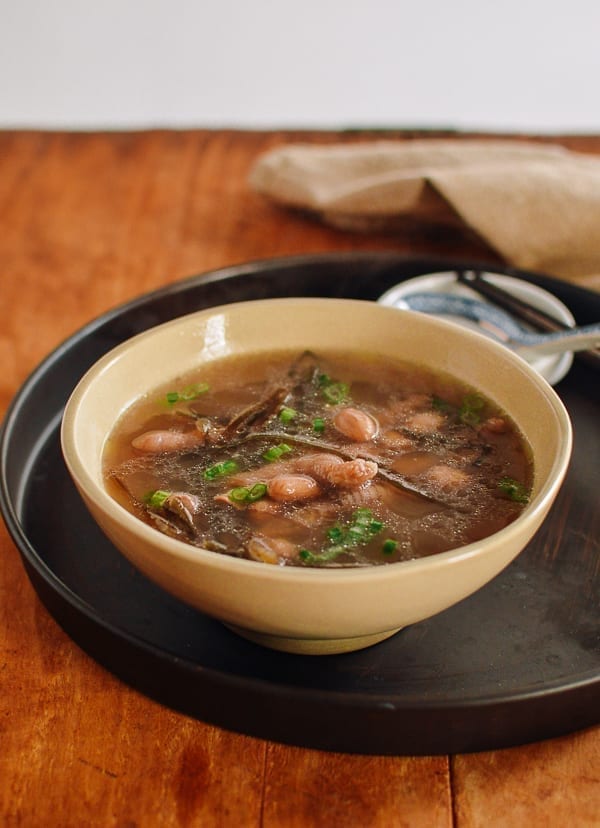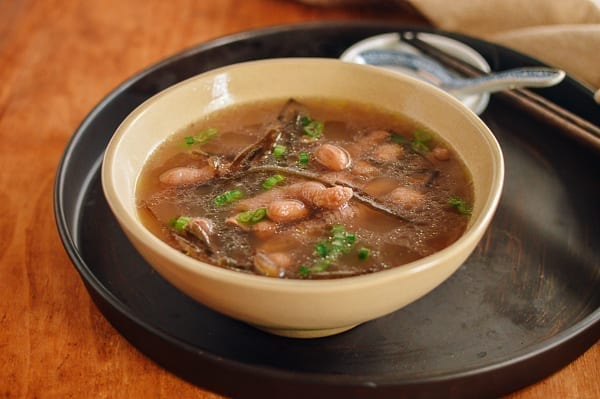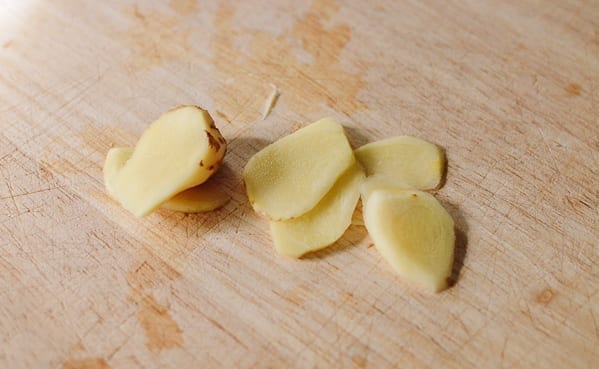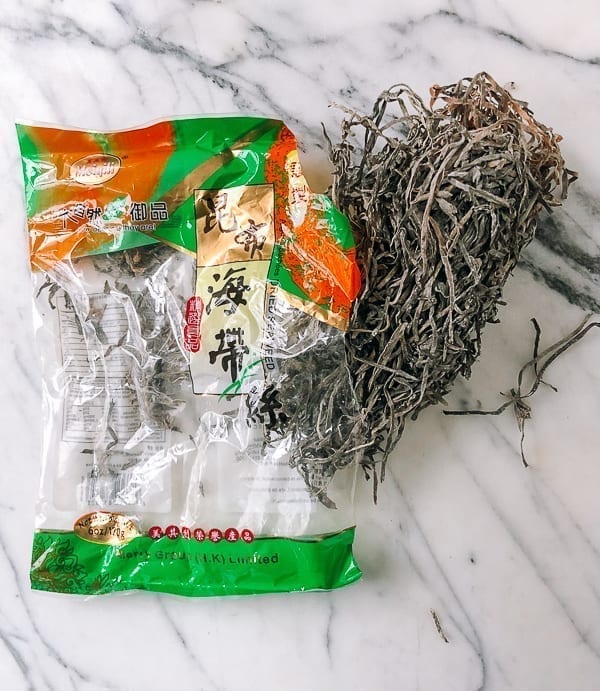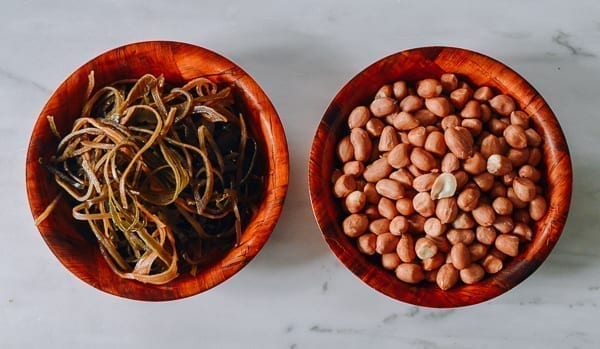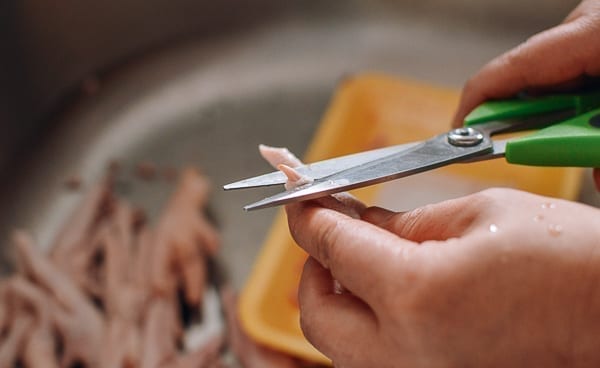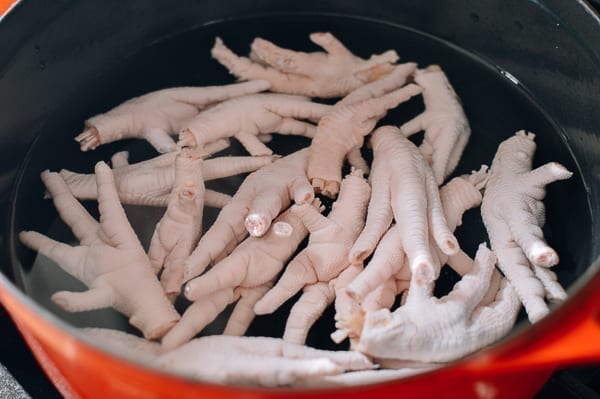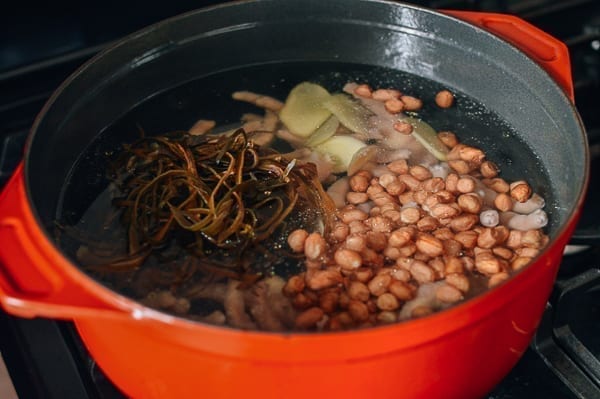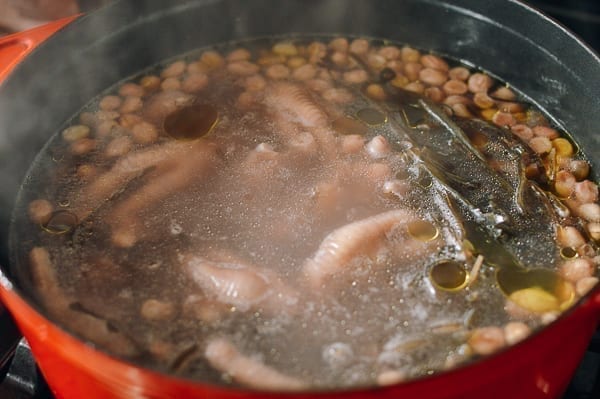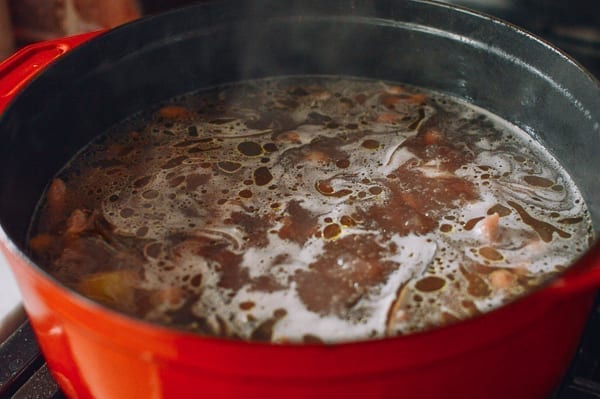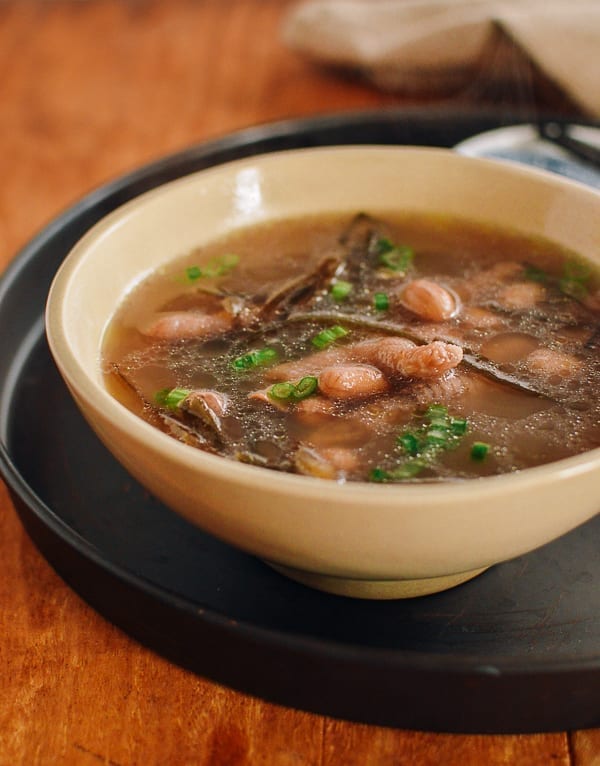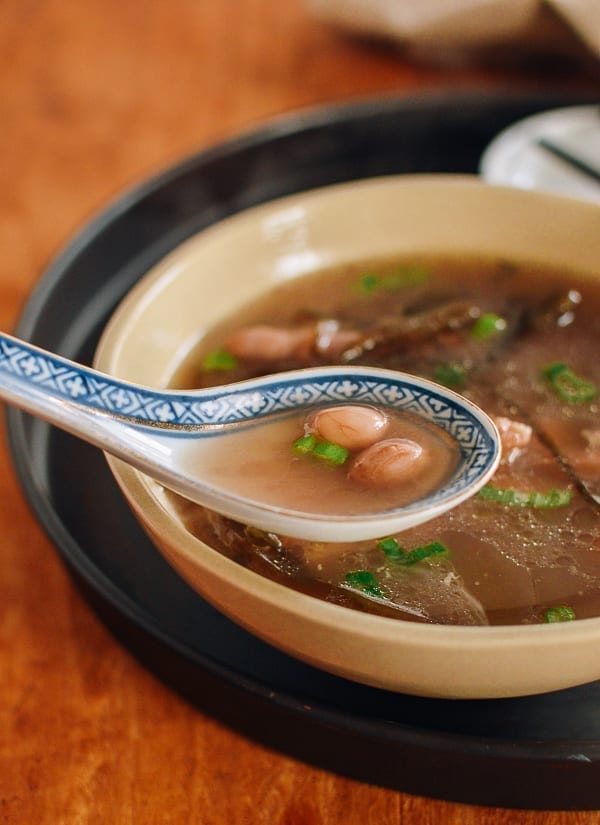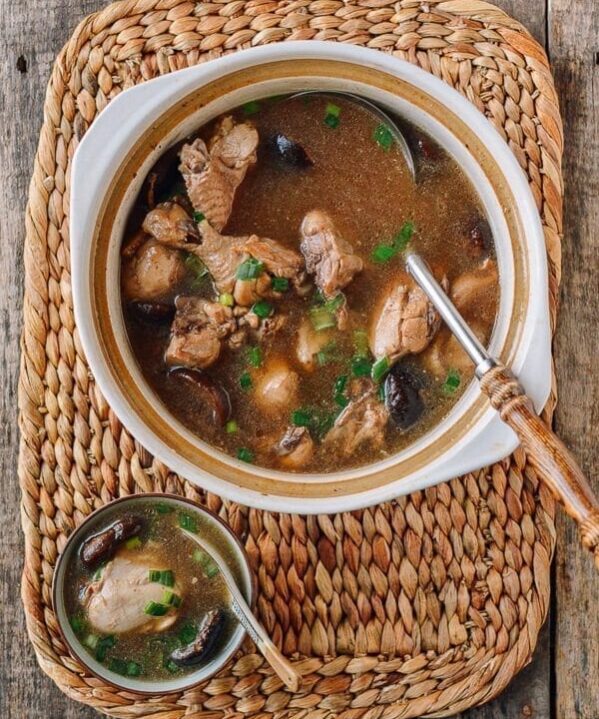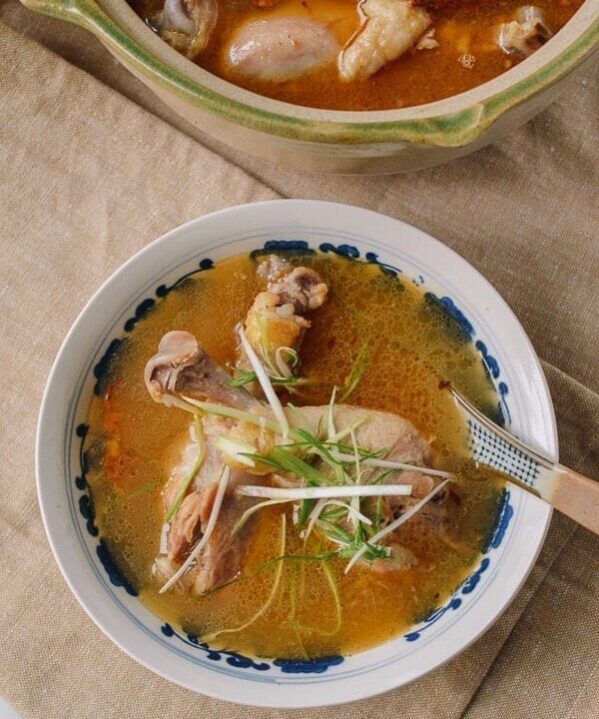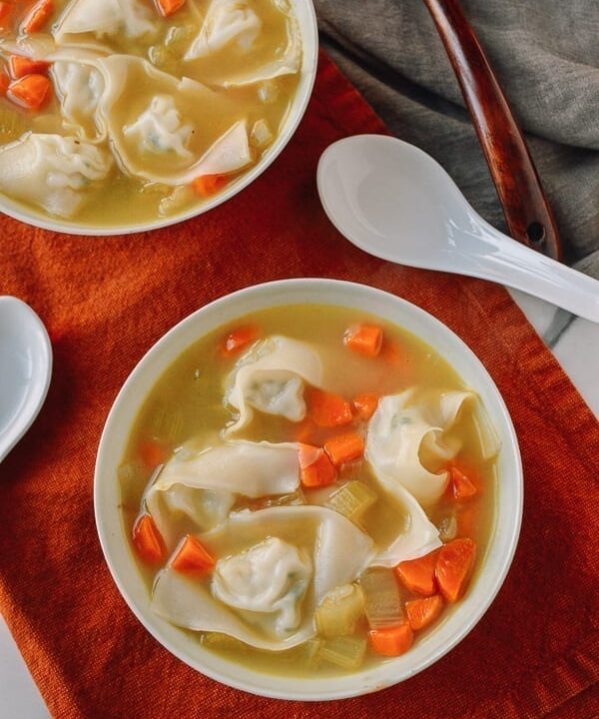Cantonese Chicken Feet Soup is so classic, I feel like a fraud for not posting it sooner! Since it’s the season for soups, I hope you give this traditional recipe a try. It will warm you, and the collagen-rich broth is thought to improve the skin and slow aging!
Yes, They Are Actual Chicken Feet
I know some readers will be weirded out by the chicken feet in this recipe. I could call them “phoenix claws” to cover up any awkwardness, but I’ll just call them what they are.
The bottom line is, yes, this is not a recipe for everyone! I still remember my own reaction when I had this soup the first time––when I was getting to know Bill and his family.
Bill’s parents used to make Cantonese Chicken Feet Soup all the time, and that’s who I learned it from. I’m pretty certain all Cantonese kids have had this soup at least once, probably at their parents’ or grandparents’ house. That’s how traditional it is!
The Art of Cantonese Soups
Cantonese soups are not only about taste, but nourishment and targeted health benefits. It takes years of training to pair and combine ingredients, because each component plays a key role in achieving the right flavors and benefits.
With considerations like the season, age, overall health, and constitution, Cantonese soups can become a real art. I’ve come to realize the process is very unique. All the flavor comes from the ingredients. The only spice is salt, which you add right before serving!
After hours of simmering, there isn’t one dominant flavor, but a harmony of tastes from the combination of those few great ingredients. No special cooking techniques––just time, patience, and layering flavors from a few key components:
- Protein: Opt for pork, chicken, and/or seafood. Cantonese soups rarely use beef or lamb.
- Fruits and vegetables: Commonly used ones are pear, papaya, water chestnuts, carrots, mushrooms, lotus root, mountain yam, and leafy greens like bok choy or watercress.
- Herbs and grains: Consider barley, peanuts, almonds, dates, goji berries, and lily bulbs. There are many others that are more obscure (not to mention hard to translate!).
- Ginger: This ingredient is probably the common thread that appears in every soup. Ginger adds to the warming effect of soups and a clean flavor.
- Dried seafood: Cantonese people love seafood. Dried scallops, dried squid, and dried fish maw all add wonderful depth to Cantonese soups—similar to how you might drop a few anchovies into salad dressing or pasta.
Pick what you have or sounds most appealing to you, and make you and your loved ones a delicious, nutritious soup this winter!
Cantonese Chicken Feet Soup: Recipe Instructions
Soak the dried seaweed (haidai, 海带, also known as kelp or kombu) in water for an hour, rinsing it with water a couple of times to ensure there’s no sediment. Drain and set aside.
You can also use fresh rehydrated haidai/kelp if you are lucky enough to have local Chinese or Asian market that carries it. Rinse the peanuts also and set aside.
So how do you prepare chicken feet? Relax, they are processed with skin removed and cleaned thoroughly before they arrive to the butcher counter! All you need to do is rinse the chicken feet, and trim away the nail portion with kitchen shears.
Transfer to a soup pot. Fill with enough water to submerge completely, and add 2 tablespoons Shaoxing wine. Bring to a boil, and let boil for 1 minute. Remove from the burner, drain, and rinse clean.
The chicken feet then go back into the soup pot with the seaweed/haidai (海带), peanuts, ginger slices, and 12 cups of water. Cover and bring to a boil over high heat.
Once boiling, reduce the heat to medium and cook with the lid on for an additional 20 minutes.
Lastly, reduce the heat to a low simmer (with movement, but no large bubbles) for 2 hours, until the chicken feet are soft and falling off the bone tender.
Add salt to taste, garnish with chopped scallions, and serve.
Cantonese Chicken Feet Soup
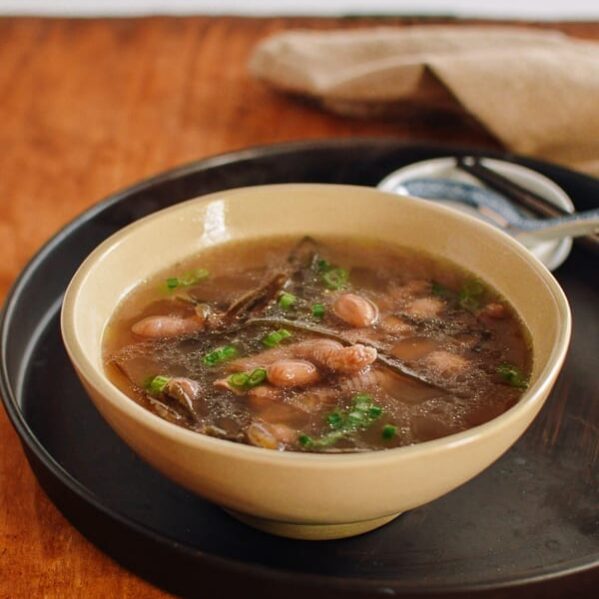
Ingredients
- 15 grams dried seaweed (haidai, 海带, also known as kelp or kombu - sliced into thin strips, a small handful)
- 1 cup raw shelled peanuts (150g)
- 1 1/2 pounds chicken feet (700g)
- 2 tablespoons Shaoxing wine
- 4 slices ginger
- 12 cups water (2800 ml)
- salt (to taste)
- 1 scallion (chopped)
Instructions
- Soak the dried seaweed for an hour, rinsing it with water a couple of times to ensure there’s no sediment. Drain and set aside. Rinse the peanuts also and set aside.
- Rinse the chicken feet, and trim away the nail portion with kitchen shears. Transfer to a soup pot. Fill with enough water to submerge completely, and add 2 tablespoons Shaoxing wine. Bring to a boil, and let boil for 1 minute. Remove from the burner, drain, and rinse clean.
- The chicken feet then go back into the soup pot with the hai dai (海带), peanuts, ginger slices, and 12 cups of water. Cover and bring to a boil over high heat.
- Once boiling, reduce the heat to medium and cook with the lid on for an additional 20 minutes.
- Lastly, reduce the heat to a low simmer (with movement, but no large bubbles) for 2 hours, until the chicken feet are soft and falling off the bone tender. Add salt to taste, garnish with chopped scallions, and serve.
